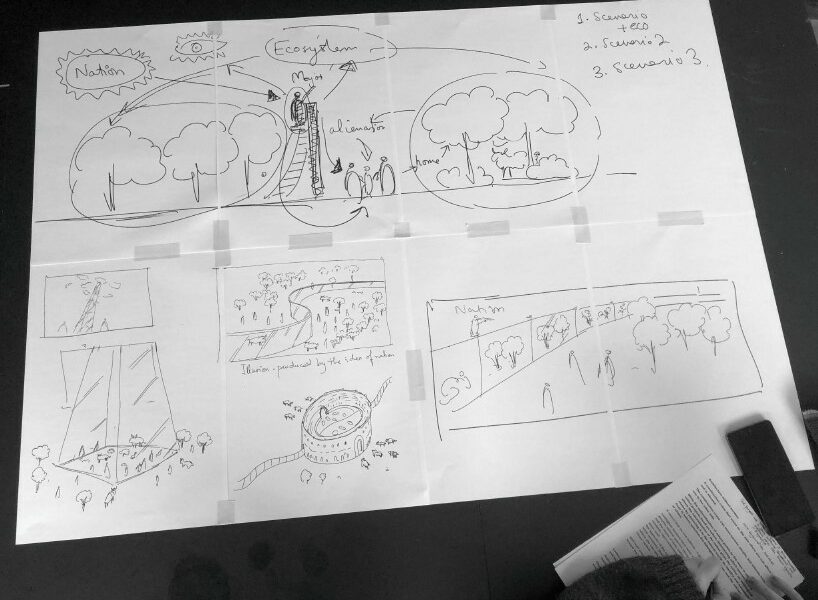
This year’s Urban studies Studio 2: Urban Futures explores the process of commoning as a social practice that radically rethinks property regimes and social relationships in order to envisage a ‘common future’: where despite our differences, we are all moving towards a collective and planetary future.
The final project for the studio sees students contribute to alternative ‘common futures’ through an architecture competition for a contemporary border crossing. The competition organised by The Canadian Academy of Architecture for Justice (CAAJ) “A New Frontier: The Contemporary Border Crossing” invites students to contribute to alternative common futures by designing a contemporary border crossing that can be ‘integrated into the surrounding context and community, act as a catalyst for building a positive relationship between two nations, and address what a border entry means in today’s context.’ The act of designing a border crossing requires students to rethink the prevailing ideas and imaginaries of how different states, communities and ecosocial assemblages are organised and how boundaries between them are defined. By exploring the legal and architectural forms that shape our societies, students can engage with the themes of commoning and contribute to the creation of alternative futures.
As a final outcome, student teams were asked to develop a specific design that answers the technical and conceptual requirements of the call. This includes creating two A1 posters and an accompanying 500-word description.
On 4th of May (A400,4th floor lobby) Students will introduce their projects at the final presentations followed by feedback and discussion.
Students: Aleyna Canpolat, Larisa Illetterati, Alp Ozalp, Ishrat Shaheen, Kalina.Trajanovska, Maria Laura Bendezu Ulloa, Jim Wolff.
Tutors: Agata Marzecova, Sean Tyler.
Guest critic: Klaske Havik
